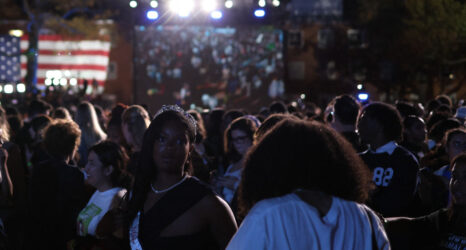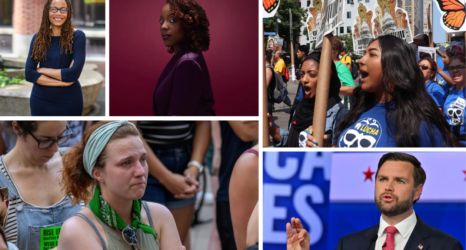For only the second time in the competition’s history, girls outnumber boys and represent 60 percent of this year’s group of Regeneron Science Talent Search finalists.
Among the 40 finalists in the competition, these 24 young women are paving the way for future STEM leaders.
Founded and produced by Society for Science and the Public, the competition recognizes and empowers the most promising young scientists in the U.S. creating the ideas and solutions to address our world’s most urgent challenges.
The 40 finalists will compete for more than $1.8 million in awards from Regeneron from July 21 to 29, in the first ever virtual event in the competition’s 78-year history. (The event was originally scheduled to take place in March, but was postponed due to the coronavirus.)
“This year’s finalists are not only scientific leaders and innovators, but also activists and pioneers,” said Maya Ajmera, president and CEO of Society for Science and the Public and publisher of Science News. “These young scientists are living through the greatest epidemiological event in living memory, and have been resilient in the face of the changing world and what it means for their immediate future. They recognize the power science has to spark conversation and influence our world’s most pressing issues and we’re excited to share their new ideas with the public.”
While we still have a long way to go to close the STEM gender gap, this is a positive step forward towards a more inclusive STEM field.
Meet Some of the Finalists:
Maria Fields
For the Regeneron competition, Fields applied modern computational and statistical analysis methods to gene expression data from triple-negative breast cancer tumors of patients classified by race to identify patterns.
Her findings suggest a possible genetic basis for the disparity in outcomes for African-American patients—who are two to three times more likely than European-Americans to be diagnosed with this deadly form of cancer.
“It is a major misconception that the lack of women of STEM is a result of girls not being interested in STEM,” she says. “The truth is girls are rarely given the chance to be interested in STEM.”
Fun fact: Fields was also the first person to attend the Scripps National Spelling Bee from her school, she was selected out of 200 spellers with five other spellers to be featured in Amazon Kindle’s social media, print and TV campaign.
Kyra McCreery
For her project, McCreery studied possible links between the slowdown in tropical cyclone translation speed and intensifying storm precipitation. She concluded that continued climate change could influence cause these storms to slow and stall more often, increasing local precipitation and large-scale flooding.
The best way to get more women involved in STEM?
McCreery says: “Surround women and girls with inspiring STEM role models. By showcasing examples of successful women thriving in STEM fields, we’ll encourage girls to become engaged with STEM disciplines and realize their potential for success in any field their heart’s desire.”
Lauren Chen
If you walk into Chen’s room, the first thing you will notice is the wall decor: jigsaw puzzles of an impressionist countryside, hot air balloons floating above a bay, a Bob Ross painting. These are her most recent accomplishments on display. She aspires to know each piece by its color, size and shape, eager to find its precise position.
For her project, Chen determined that the presence of high levels of a particular microRNA molecule in the blood of post-treatment breast cancer patients could potentially provide an early warning of tumor recurrence and progression.
“I think society should encourage successful women to reach out to younger girls aspiring to pursue STEM,” she says. “Being able to talk to a role model can be one of the most inspiring moments in anyone’s lives.”
A full list of the Top 40 Finalists and their project titles can be found here. You can virtually attend the winner’s awards ceremony on Wednesday, July 29, 8-9 p.m. ET by registering here.





